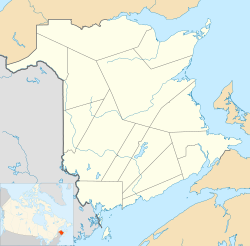Nashwaak | |
|---|---|
Rural community | |
 View of Nashwaak | |
| Coordinates: 46°27′7.9″N66°59′2.9″W / 46.452194°N 66.984139°W | |
| Country | Canada |
| Province | New Brunswick |
| County | York County |
| Regional service commission | Capital Region |
| Incorporated | January 1, 2023 |
| Time zone | UTC-4 (AST) |
| • Summer (DST) | UTC-3 (ADT) |
| Area code | Area code 506 |
Nashwaak is a rural community in the Canadian province of New Brunswick. It was formed through the 2023 New Brunswick local governance reforms.
